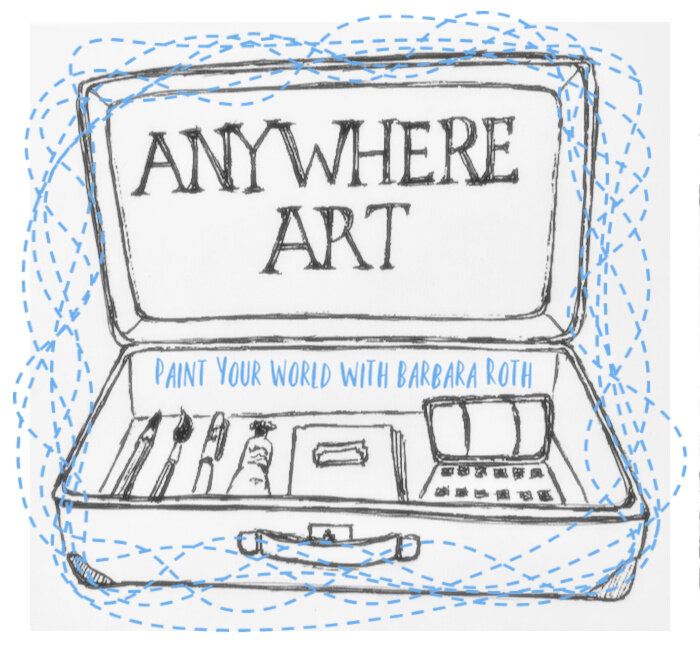Lesson 28 How Wet?
This week's lesson will teach you how to create different textures and effects by studying the wetness of your paint and water on your paper. The basic wet into wet technique is to dip your paintbrush into water only and brush the water on your watercolor paper, then brush the paintbrush, now dipped in paint onto the wet area.
I like to only wet small areas of my paper at a time and float in the paint. Some painters might wet their entire page, but not me, that's too difficult to control. So get out your paints and paper, do a drawing or copy mine onto watercolor paper, then brush some water on an area of your painting. Study the water and ask your self, is the water shiny? very shiny? matte? slightly damp? dry???? Now paint your painting experimenting with the different levels of dryness. Let me know what you think and if you have a favorite.
I am posting my attempts here with the different levels of dryness. I must admit, that even though I enjoyed painting these examples, I am not very happy with the results. I need to be honest with you, that being dissatisfied with your results is part of the art of watercolor painting, its how you try out different methods until you find the right combo of colors or techniques that work for you.
Lesson 29 - Introduction to Your Friend, the Color Wheel
Its helpful to know some simple facts about the color wheel when you use watercolor paint. If you have time this week, print out this color wheel and paint the circles with your paints. If you don't have all of the colors, you can mix them. For instance, to get orange, mix red and yellow, to get yellow orange add more yellow. The other important fact that effects your paintings is that when you mix one color with its opposite (also called its complement), you paint color will be dulled down and depending on the amount of each color you use in the mixture you will get different dulled colors from a slightly subdued color to a complete neutral.
Lesson 30-Glazing
Glazing is painting light washes of color on dry paper, letting the first wash dry and painting successive washes on top of each other but each layer must have dried completely before you add the next one.
Your assignment this week is to paint circles in the color wheel from the colors you have in your palette. If you need help creating a color mix please email me. Then, once your have your color wheel finished, put it up somewhere near where you paint, so you can consult it as you paint. Then, create a painting or two or three (depending upon the amount of time you have to paint this week) using only pairs of different complementary colors. Try mixing your complements in different amounts. If you mix up a color you really like, then note it somewhere where you can find it, so you can start compiling your own color mixtures recipe book of swatches. Don't get too bogged down in making perfect swatches, just analyze the colors you mix and see what you think about neutralized and subdued colors.
